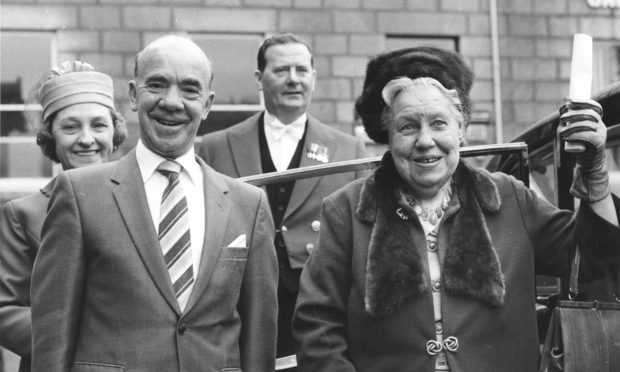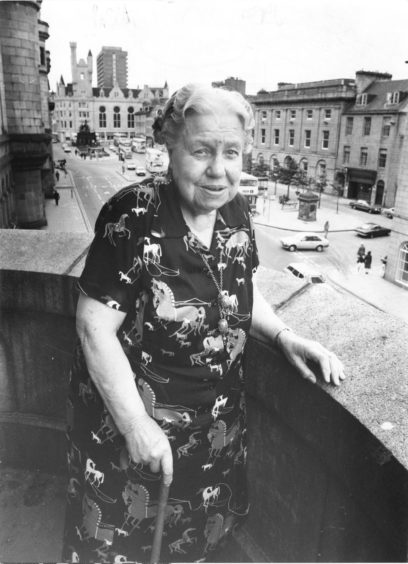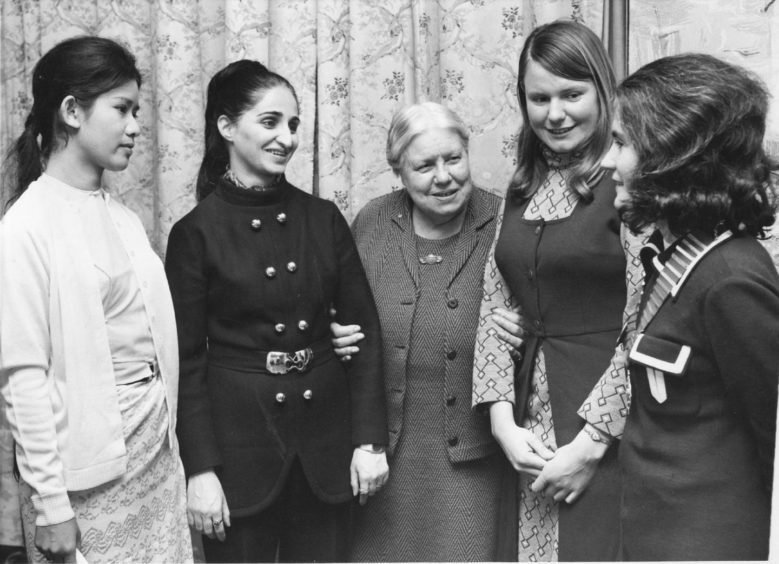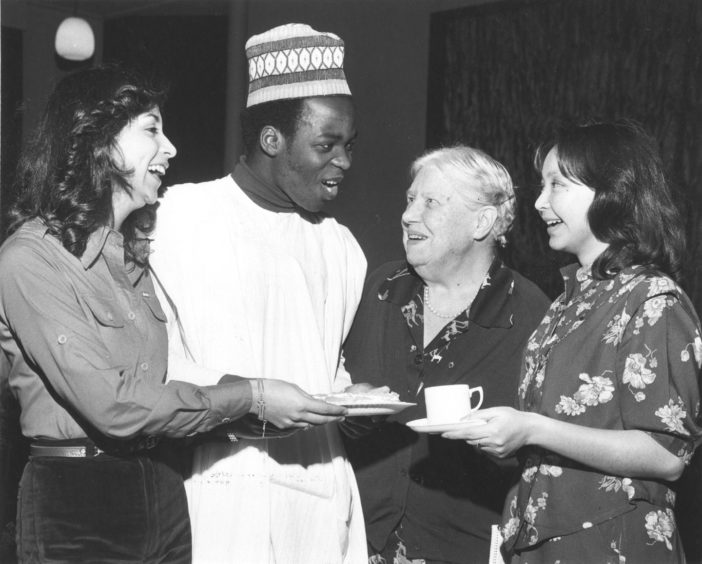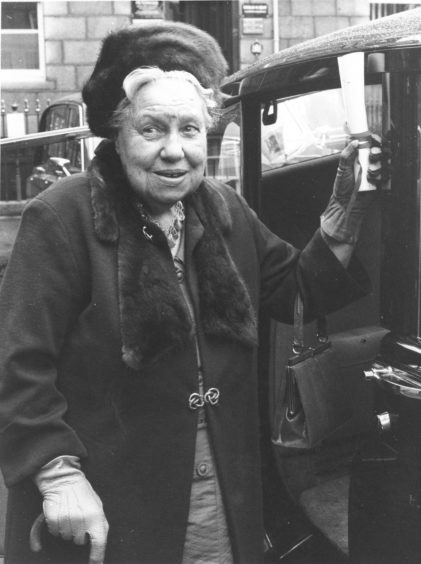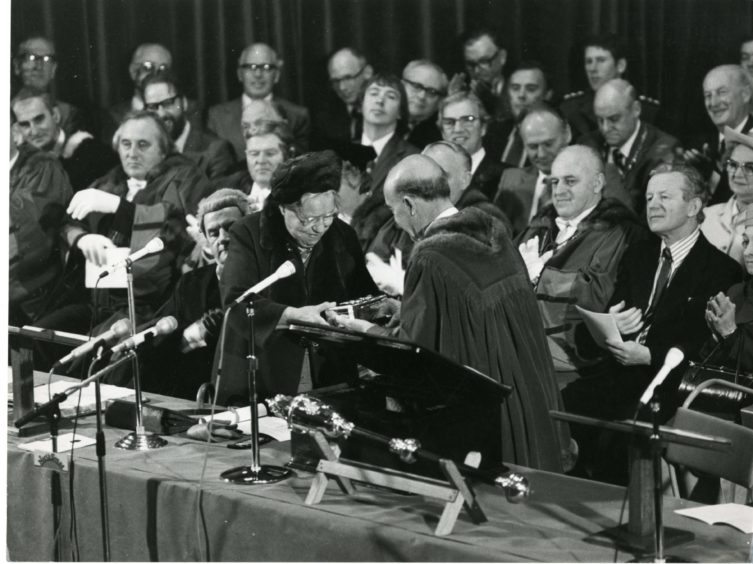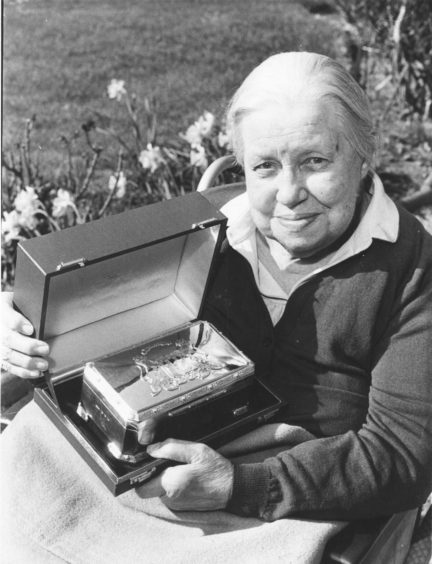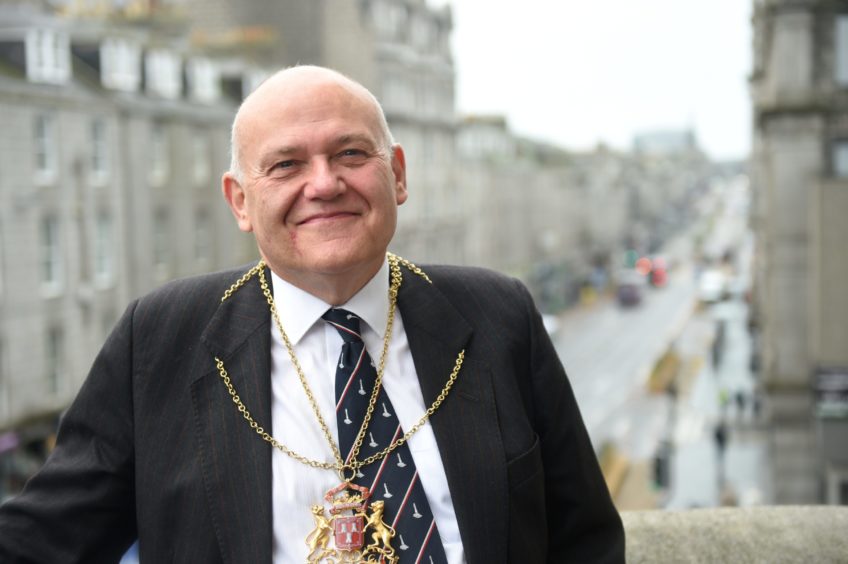She was one of the most remarkable woman ever to emerge from Aberdeen and stamp her imprint all over the creation of the National Health Service.
And Mary Esslemont, a committed champion of education, young people, internationalism, liberal values and tackling prejudice and pomposity with warmth, wit and steely resolve, made such an impression on the different fields in which she excelled that she was granted the Freedom of Aberdeen 40 years ago in 1981.
As one of the city’s most distinguished and best-loved citizens, she was known by her many friends and colleagues as Dr Mary, and her long life and myriad achievements are being remembered in the build-up to International Women’s Day on March 8.
Age was just a number for this redoubtable character.
She climbed on to a student bus in 1982 to travel overnight to London for the inauguration of HRH Prince of Wales as president of the British Medical Association.
Later in the evening, when the rest of the BMA delegates were retiring to their beds, Dr Mary re-joined the youngsters and returned to Aberdeen with them to attend a graduation lunch the next day.
The fact that she was 91 at the time was neither here nor there!
Her early life marked her out as somebody special
Born in Aberdeen in 1891, there was never any doubt that the gifted child would become a force of nature in whatever vocation she pursued.
Her mother, Clementine Macdonald, was the president of the city’s Women’s Liberal Association, while her father, George Esslemont, was the Liberal MP for the old constituency of South Aberdeen.
From the outset, she demonstrated an aptitude for education with a special focus on health and went to Aberdeen University, graduating with a BSc in 1914 and an MA in 1915.
Unafraid of any challenges, she lectured in science at Stockwell Training College in London before going back to her alma mater to complete her medical degree in 1923.
Her contemporaries recalled as her outgoing, articulate, fun…a trailblazer who was always more interested in the trail than the blazer.
So it was perhaps hardly surprising that she became the first-ever female president of the Students’ Representative Association.
Making her mark in the early days of the NHS
After university, Dr Mary became an assistant medical officer in Keighley in Yorkshire from 1924 to 1929.
But she remained in touch with her former friends and acquaintances and returned to Aberdeen to become a general practitioner.
This was in the days before the NHS was part of the fabric of British society, but even while she continued her vocation, and was appointed as a gynaecologist at the city’s Free Dispensary, she noticed the grinding poverty and illness which was endemic throughout many parts of the north-east and was an advocate for a system where medical treatment was not denied to those who couldn’t afford it.
As the British Medical Journal later said: “Dr Mary was noted for her work with the city’s poor and underprivileged and for her activism for women’s rights.
“In addition to her medical work, her efforts for the city and the university were continuous. She served for more than 40 years on the university general council.
“In 1947, she became the first female assessor on the university court, then, in 1955, she was made a CBE and became a magistrate.
A life dedicated to helping others
“Dr Mary gave remarkable service to the BMA. She was a member of the council for 23 years and was the first woman to sit on the Scottish council in its history.
“Unsurprisingly, given her belief in the need for a better health system in Britain, she was always closely involved in the affairs of the BMA and was the only woman doctor to serve on the profession’s team which negotiated with Aneurin Bevan on the establishment of the National Health Service after the Second World War.
“It was very important to her that the new system operated effectively and Dr Mary played an active part in many national charities and international organisations. The welfare of children and nurses concerned her profoundly.
“She was a keen Soroptimist [a global women’s voluntary organisation] and, in 1961, became president of the Federation of Soroptimist Clubs of Great Britain and Ireland.
“In that capacity, she went out to Africa to help found the first Soroptimist clubs in that continent. And then she was made the vice-president of the United Nations Association.
“An inveterate traveller, she visited the Far East in the 1920s and Eastern Europe in the 1930s. Even at the height of the Cold War in 1956, she went to Russia at the invitation of the Russian government as the only woman in a team of six doctors.”
Dr Mary was blessed with an impish humour
Some committee members have a terribly lofty opinion of themselves and regard humour as redundant or worse, impertinence.
Thankfully, that did not apply to the indefatigable Scot, who enjoyed a laugh and even at her own expense.
On one occasion, during an annual general meeting of the BMA in central Scotland, she was wrongly introduced to the audience as the Archbishop of Glasgow. Dr Mary emitted a throaty giggle and everybody else joined in as levity shattered the silence.
She was similarly chatty and stimulating with children and, as the BMJ noted after her death: “Humorous and with a twinkle in her eye, she never talked down to children or students and made it clear she didn’t like it when other people did.
“She had great personal charm, was very kind, and had an impish sense of fun, but that disguised her quiet determination to achieve any objective she believed to be right.”
Being recognised by her beloved home city
She was awarded an honorary LLD by Aberdeen University in 1954 and a student residence, Esslemont House, was named after her in 1976.
But the most conspicuous acclaim arrived five years later when, at the age of 90, this grand old lady was given the Freedom of Aberdeen for her services to health, education, philanthropy and various other good works.
The Press and Journal reported on Saturday October 10: “One of Aberdeen’s most respected citizens and an internationally-recognised authority in the medical field, Dr Mary Esslemont, had the freedom of the city conferred on her yesterday at a splendid civic ceremony.
“Dr Esslemont, of 30 Beechgrove Terrace, has, over the years, gained a worldwide reputation and has had many honours bestowed on her, not only in her own profession, but also in other walks of life.”
However, after being presented with the Freedom Scroll by the Lord Provost, Alex Collie, in the Music Hall which was packed with dignitaries, she declared: ‘This is the most memorable moment of my life.”
‘We should all be proud of the NHS’
Mr Collie recounted how the recipient had “come face to face with the ravages of deprivation” and had been spurred on “during a time when there were vast areas of slum deprivation in Aberdeen where people lived and died in abject poverty”.
Dr Mary responded that she was delighted some things had improved and subsequently launched into an impassioned defence of the NHS – which even then had its critics.
She said: “For 22 years, I travelled the world, attending conferences for the British Medical Association, and I had the chance to study the different health services which were being offered in many other countries.
“And, for all its faults and failings – which I hear about – I believe we have the best National Health Service in the world.”
‘She fully earned the Freedom of Aberdeen’
Even today, her legacy and accomplishments are recorded with pride in her home city.
Lord Provost Barney Crockett said: “Mary Esslemont was one of the stalwart figures in the establishment of the National Health Service, one of the most treasured advances of the 20th century, and it was a mark of everything she achieved that she fully deserved to be granted the Freedom of Aberdeen in 1981.
“She was particularly interested in working with young people and promoting women’s rights and she fought throughout her life to help and support women in the NHS.
“She was also proud of her education at Aberdeen University and retained a strong connection with the institution and was dedicated to highlighting the importance of further education and learning from other people.
“As we look to celebrate International Women’s Day, I have a huge amount of respect and admiration for the life and work of the woman who was known to all as Dr Mary.”
Mary’s papers comprise a very special collection
Jane Pirie, the curator (Rare Books), at Aberdeen University’s museums and special collections centre, told the Press and Journal: “The papers of Mary Esslemont are kept in the university archives. And although there are 80 boxes of material, it does not seem adequate to cover the life and achievements of such a remarkable person.
“The papers cover a vast range of her activities with various medical, humanitarian and political associations. Nearly every sentence in the catalogue description contains the word ‘first’ or ‘only’.
“For anyone to achieve what she did in her life would be extraordinary, but the fact that she was a woman studying and working in what were very male-dominated environments is inspirational.
“The collection of personal and professional papers show that Mary Esslemont is undoubtedly a role model for women, and for medical students, but also for everyone who wishes to give public service whilst retaining the admiration and respect of her peers and her colleagues.”
She slipped away quietly in the summer of 1984
The BMJ carried an effusive obituary of her packed and progressive life which ended with a few poignant words. These read: “Throughout her long life, Dr Mary remained a steadfast supporter of the Liberal Party.
“She died [on August 25 1984] as she was sitting in her armchair, beside the window while, outside in her garden, the Liberal fete was in full swing.”
What a life. And what a credit to the Granite City!
